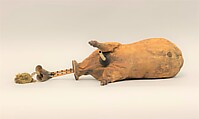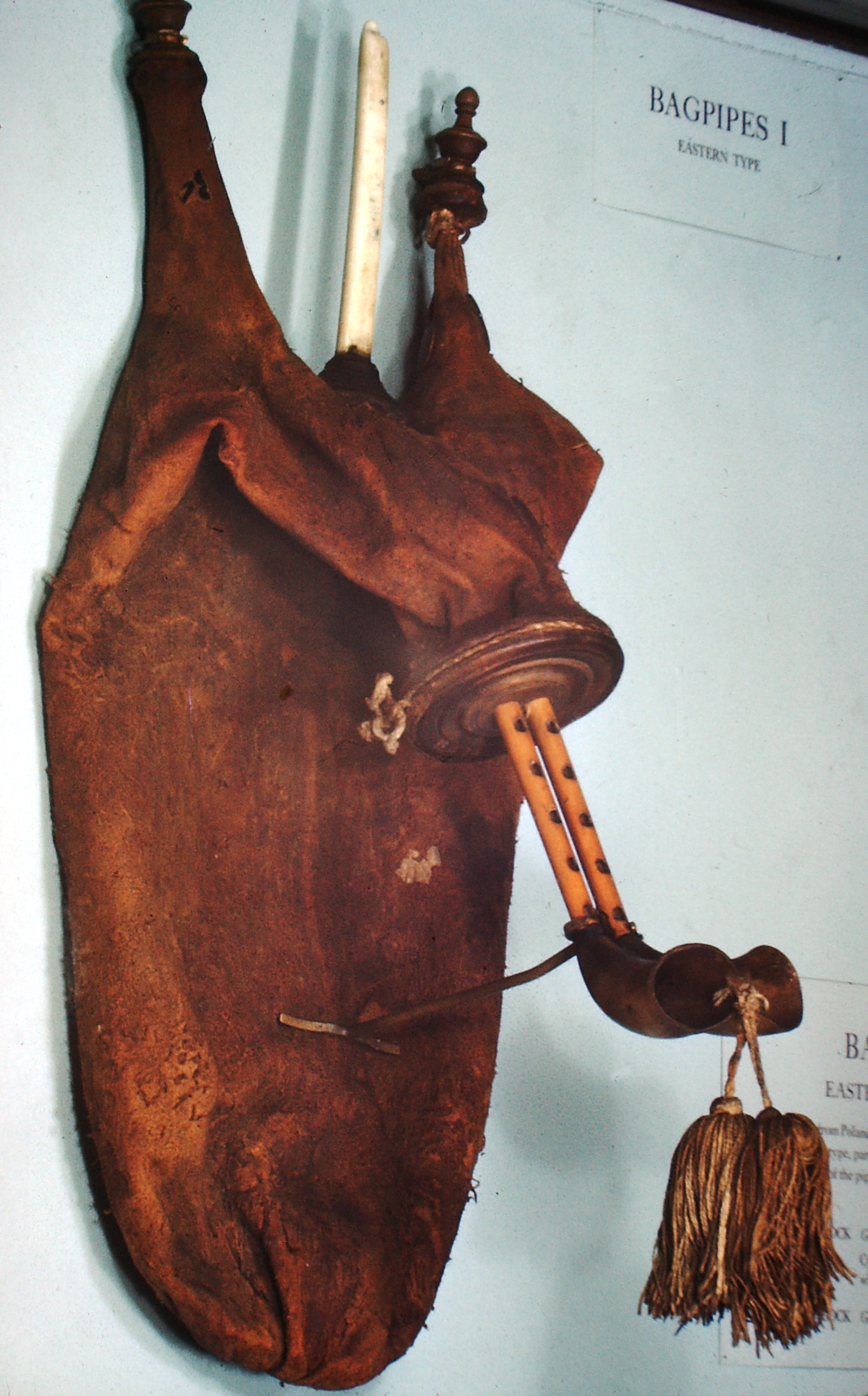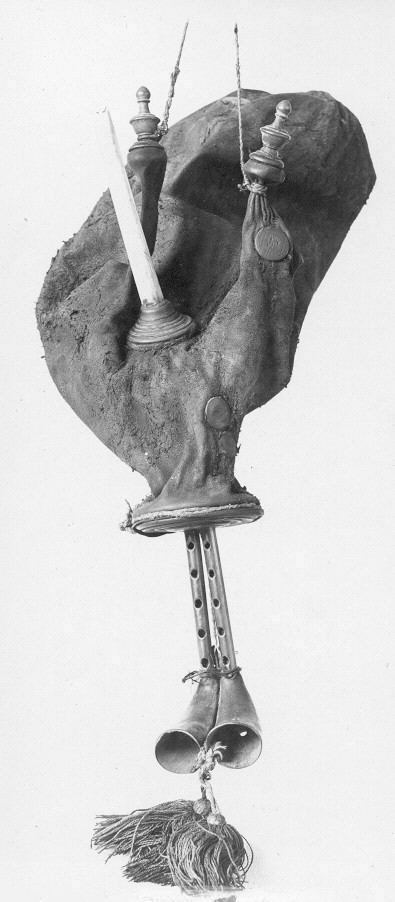Zukra
Not on view
The zukra is an instrument found across Northern Africa. Alternative names include zokra, zoukra (Libya), mezwed, mizwid, mezoud (Tunisia) or chekwa (Algeria). The instrument features a double chanter with five fingerholes on each chanter, ended by two horns, adorned with a hand-made tassel of Mediterranean origin, according to textile conservator Nobuko Kajitani (August 1998). The insufflation pipe is fitted in a turned wooden stock and is made out of bone, most likely from a large bird such as a vulture. The two forelegs are tied and each fitted with a turned wooden plug. On other instruments, the forelegs might be adorned with gazelle horns instead of wooden stops. The bag is made out of goat skin and features small wooden disks that would have plugged holes, either at the time of construction or later in order to repair the bag and make it airtight. The presence of these reparative plugs suggests that the instrument was played and repaired by local musicians.
This instrument was part of Victor Charles Mahillon’s musical instrument collection in Brussels. It was exchanged, along with four other instruments, for some of Mary Elizabeth Brown’s instruments in September 1894. It was labelled as a ‘Souqqarah’ by Mahillon, and later simply labelled as a ‘bagpipe’ from Turkey in the 1902 Musical Instrument Catalogue. The ‘Turkish’ origin of the instrument is probably linked to the Ottoman Empire territories, which extended into Northern Africa. .
This specific type of Northern African bagpipe is most commonly found in Tunisia, where the local bagpipe (mizwid), documented since at least the late 19th century, features five fingerholes. Libyan zukras generally feature four fingerholes on the parallel chanters, while the Algerian chekwa has six fingerholes. In Tunisia, the wide popularity of the instrument led it to become a central feature of an eponymous musical genre, mizwid. An urban musical genre emerging from rural migration to Tunis throughout the 20th century, mizwid has bagpipes at its center, along with a singer and a percussion section (Stapley 2006). From the late 20th century onwards, the bagpipe was often replaced by a synthesizer that maintained the melodies, ornamentation, rhythms, and tone of the original instrument. Maligned and rejected for a long time but the middle and upper classes in Tunisia, mizwid music became the highest selling musical genre in Tunisia: in 1999, 70% of Phonie’s sales - one of the two major recording companies of Tunisia, Phonie – was mizwid (Stapley 2006:254).
(Cassandre Balosso-Bardin, 2023)
Technical description:
2 cane chanters with double horn bell;
cylindrical bores, protruding 9.6 cm (15 cm including bell);
set in 1 flat, disk-shaped stock of reddish wood;
fingerholes: R 5/0, W 5/0, with 1 venthole in underside of each bell;
reeds inaccessible (typically single, upcut cane reed);
bird-bone blowpipe set in sloping cylindrical wooden stock between forelegs, protruding 12.8 cm, no evidence of valve;
goatskin bag, with chanter bells tied together with green cord terminating in tassels, wooden stocks and foreleg plugs have turned grooving and fluting.
References
Stapley, Kathryn, 2006. ‘An Urban Music with Rural Roots’, Journal of Ethnic and Migration Studies, 32(2): 243-256.
Due to rights restrictions, this image cannot be enlarged, viewed at full screen, or downloaded.
This artwork is meant to be viewed from right to left. Scroll left to view more.




